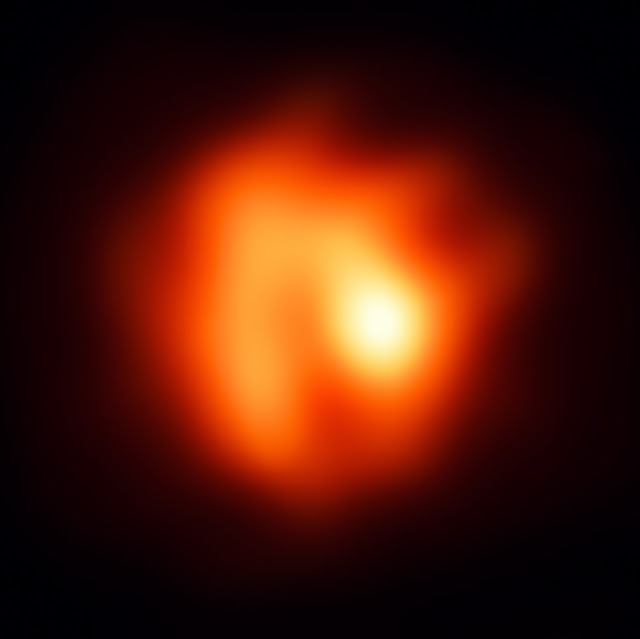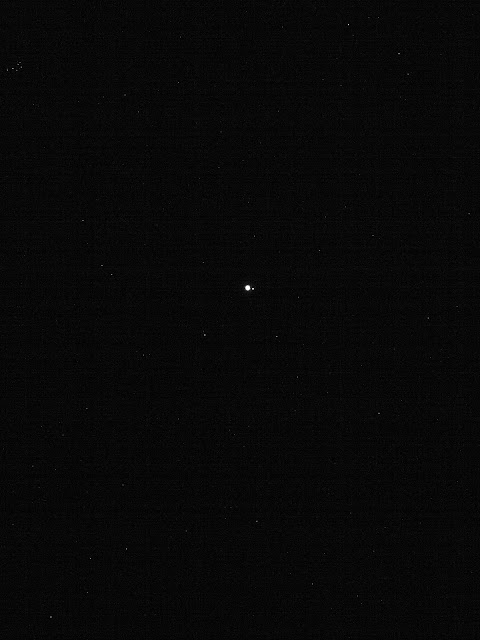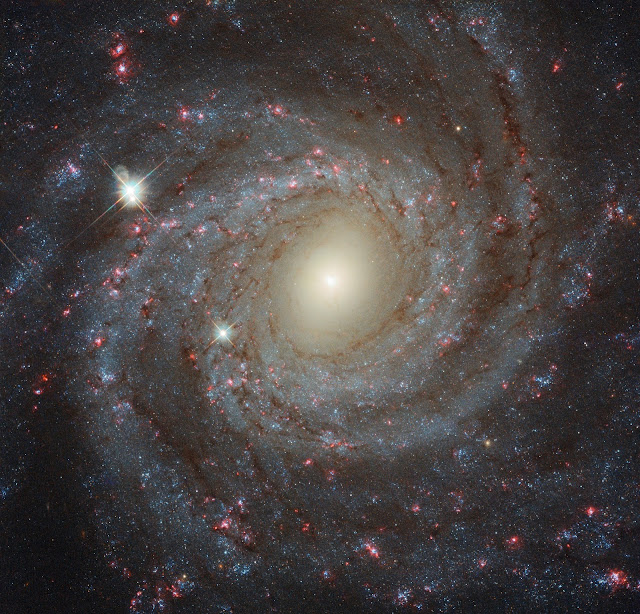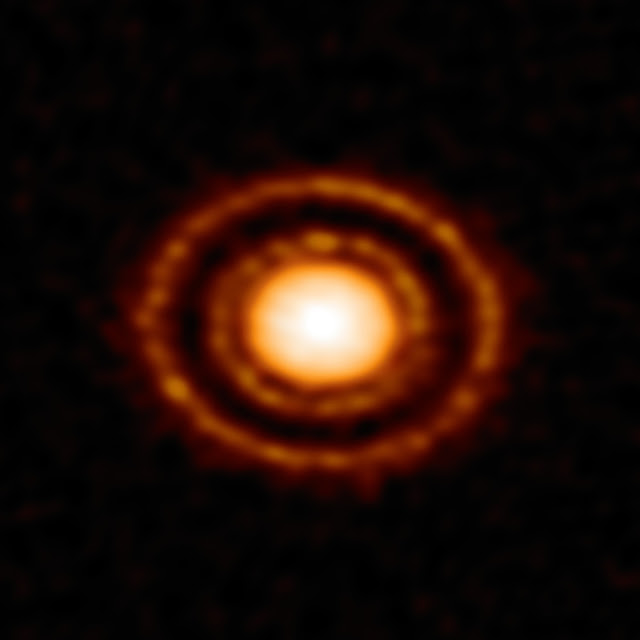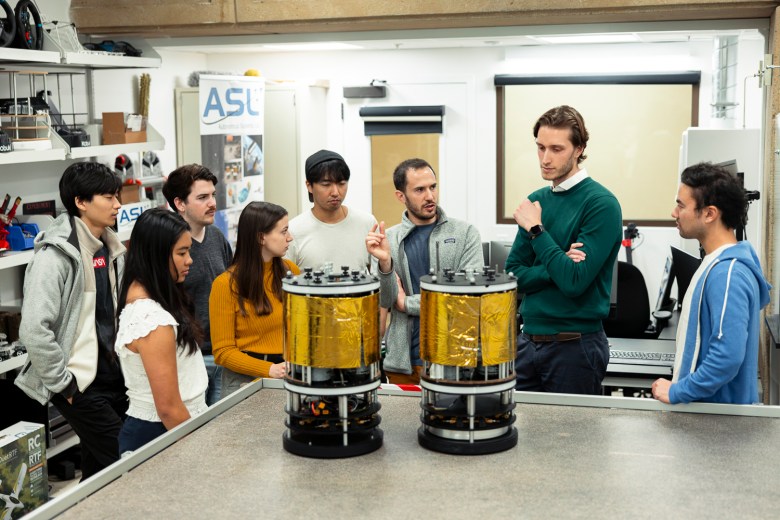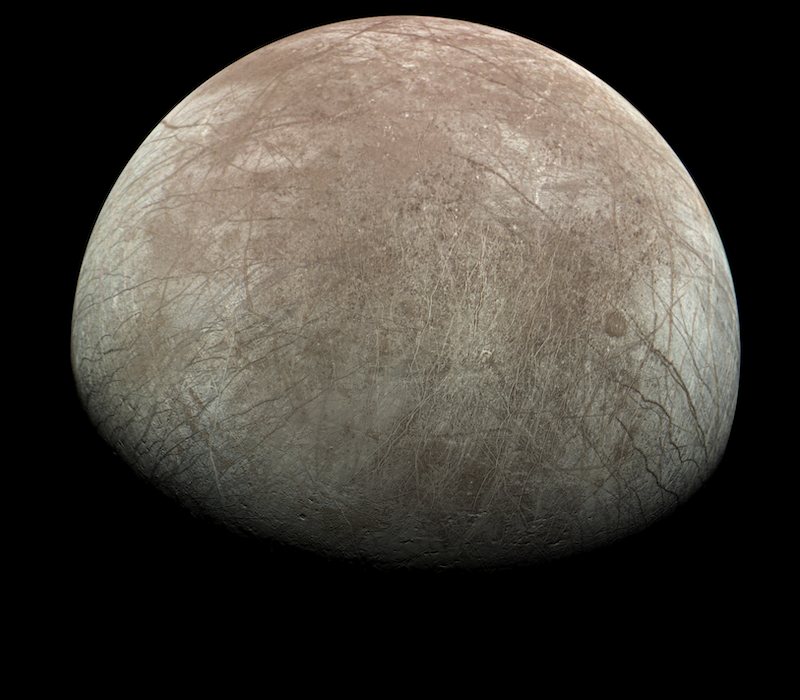Spiral galaxy NGC 1559 | Earth Blog
About 50 million light-years away lies a small, somewhat overlooked galaxy called NGC 1559. Photographed here by Hubble's Wide Field Camera 3, this barred spiral is located in the little-observed southern constellation of Reticulum. ). NGC 1559 has huge spiral arms packed with star formation and is moving away from us at a speed of










